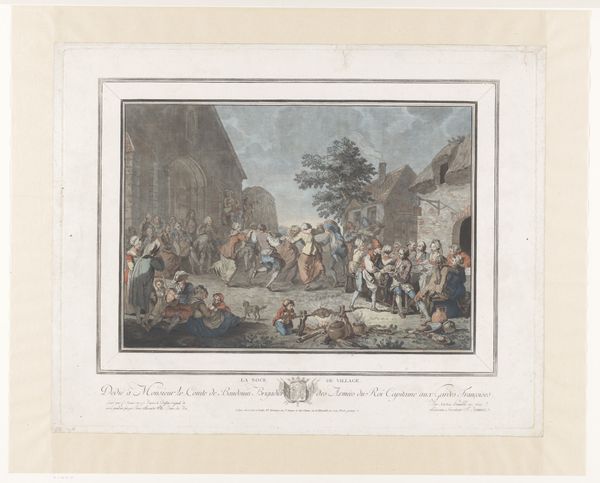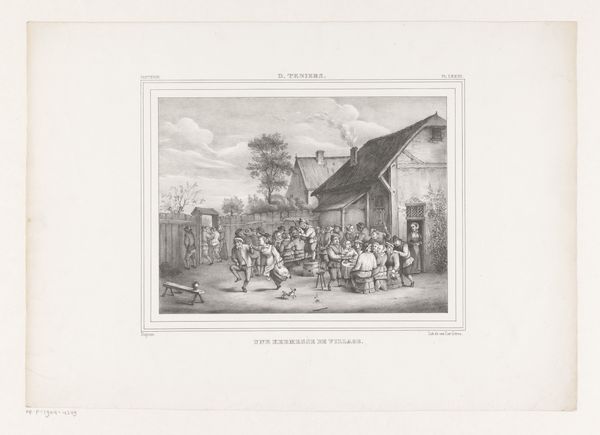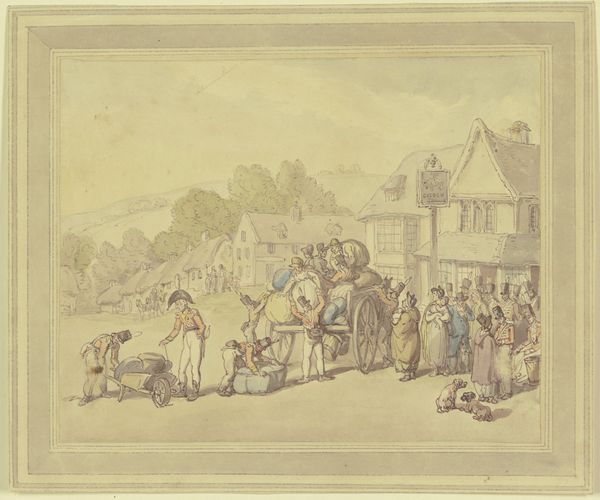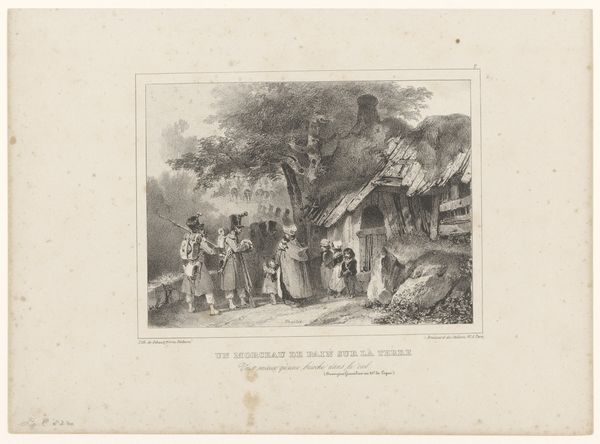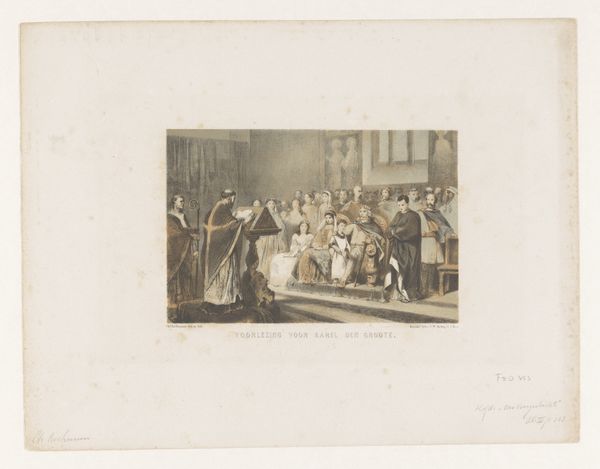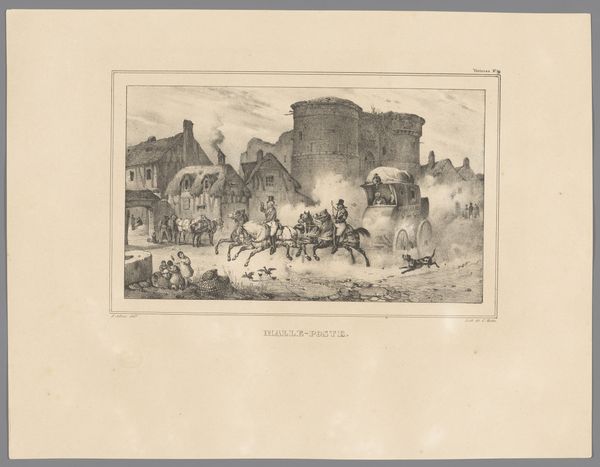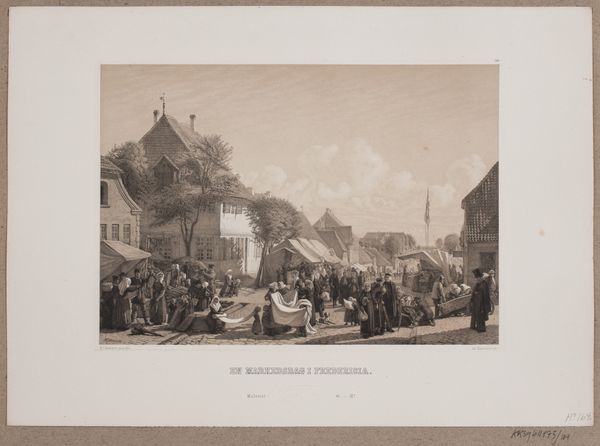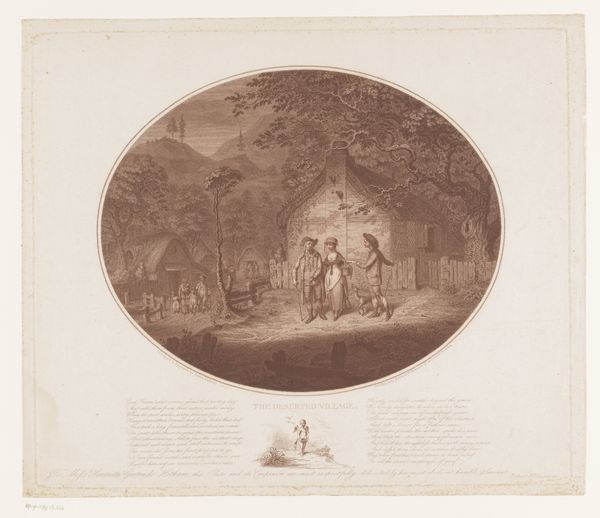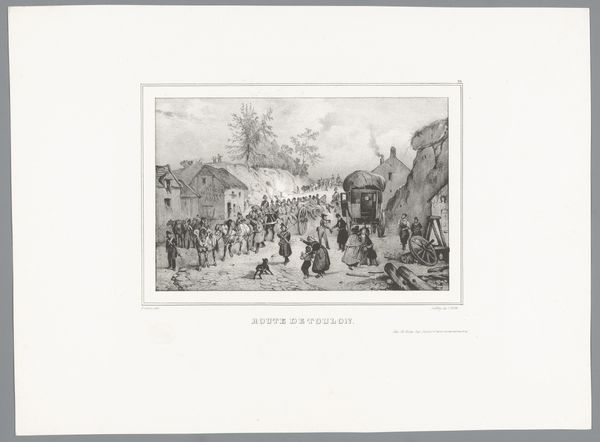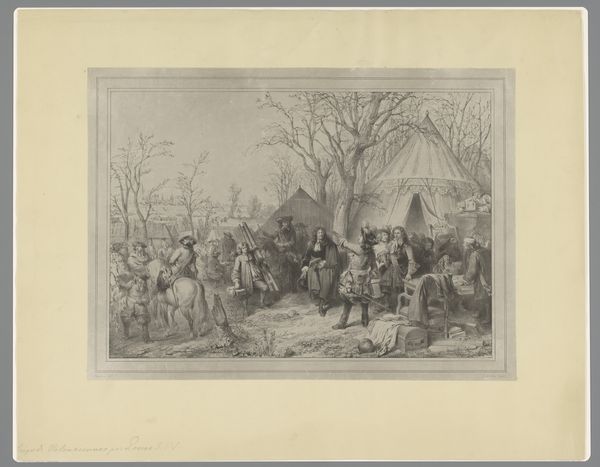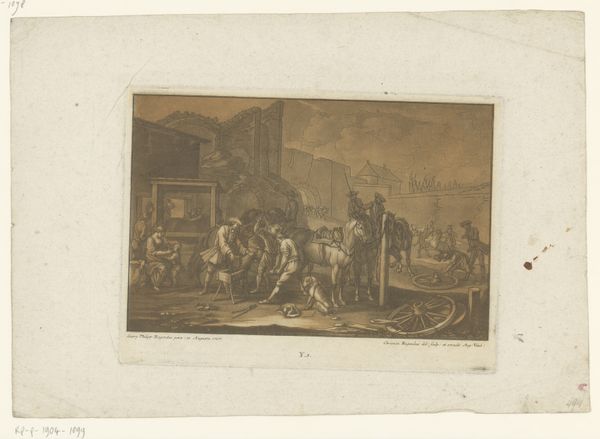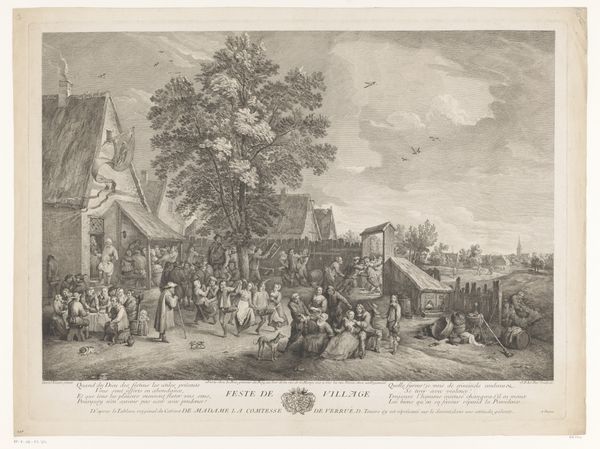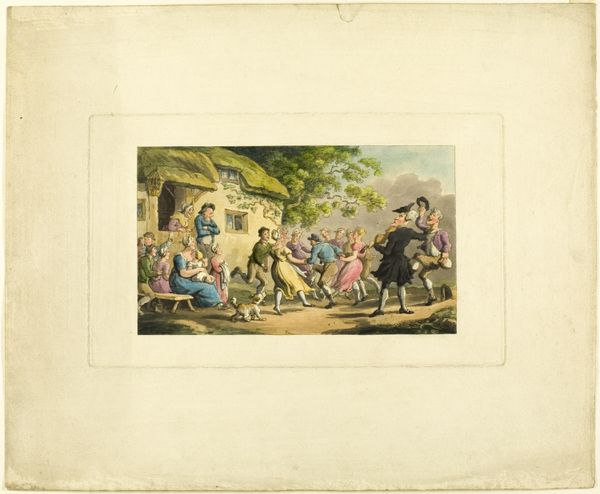
Dimensions: height 455 mm, width 574 mm
Copyright: Rijks Museum: Open Domain
Editor: This is "Resting Reapers," created around 1774 by Jean-François Janinet. It’s a print, done with watercolors. It feels quite pastoral, like a snapshot of 18th-century rural life. What do you see in it, from your perspective? Curator: Well, I see a fascinating window into the social hierarchies and romanticized views of labor prevalent in the late 18th century. While appearing as a simple genre scene, it’s highly constructed. Consider how the image caters to aristocratic tastes. The laborers are picturesque, not realistically burdened. Editor: Picturesque, you mean almost like a performance? Curator: Precisely. This wasn't made for the reapers; it was for the wealthy. The inclusion of the coat-of-arms also signals the dedication to the nobility, revealing its patronage and therefore its purpose to reinforce the existing power structures through art. Even the “rest” appears staged. Do you notice the central figures are arranged almost symmetrically? Editor: Yes, they are! Almost like a carefully directed theatre scene rather than a spontaneous moment. It definitely feels less authentic now that you point that out. Curator: And think about where this print might have been displayed: not in a peasant's cottage, but likely in a nobleman's drawing room. It acts as a kind of consumable image reinforcing social harmony for the elite. What do you think is missing from this image to make it authentic? Editor: Hmmm, maybe some sweat? And genuine exhaustion? Perhaps dirt? I hadn't considered that artwork as promoting propaganda. This insight will help me with my analysis of Rococo artwork in the future. Curator: Indeed, art never exists in a vacuum; every artistic decision carries social and political weight. And to know that opens new levels of appreciation and understanding.
Comments
No comments
Be the first to comment and join the conversation on the ultimate creative platform.
